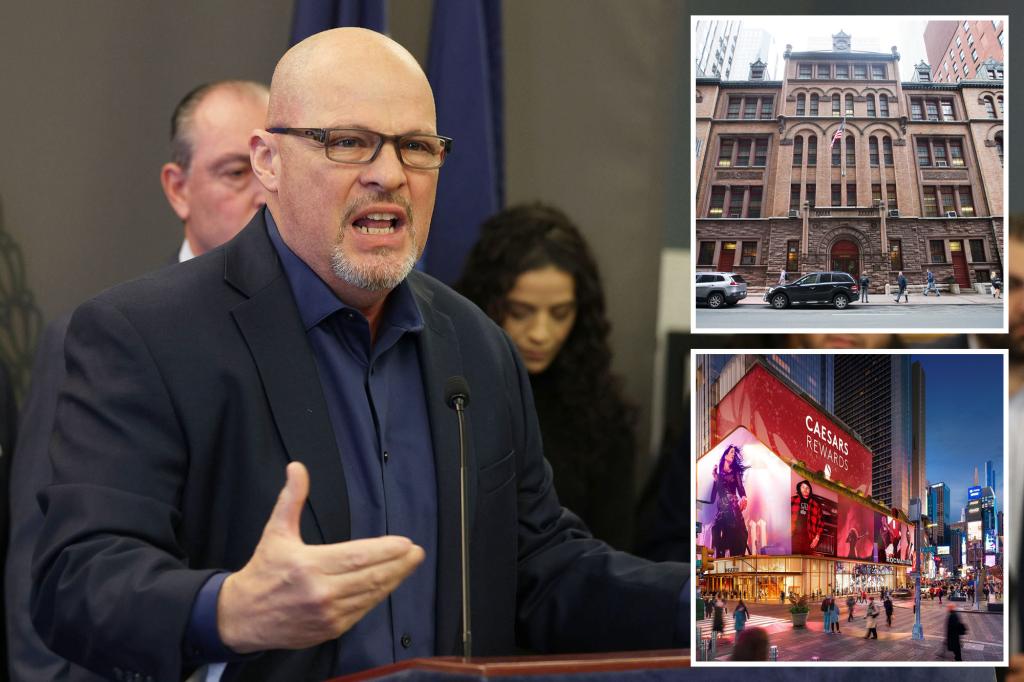The proposal to establish a casino in Times Square has sparked significant opposition from leaders in New York City’s educational and cultural sectors, notably the United Federation of Teachers (UFT). President Michael Mulgrew has expressed strong disapproval, highlighting the potential adverse effects a casino could have on the Theater District, particularly Broadway, which serves as an educational and cultural treasure for many students in the city. He emphasized the casino’s potential to undermine the unique atmosphere of Broadway, an area that frequently provides students with educational opportunities and access to the performing arts, which are invaluable for their personal and professional growth.
Mulgrew pointed to various initiatives led by The Broadway League that encourage school participation in the theater arts, such as Broadway Bridges, which aims to ensure public school students can experience live performances before they graduate. This initiative, along with others, serves to reinforce the importance of Broadway as a resource not only for entertainment but also for education, stating that it acts as a ‘goldmine’ that must be preserved for the benefit of city children. The UFT president has personally participated in chaperoning students to shows, illustrating how these opportunities can profoundly impact young people’s lives, especially for those who may not have had previous exposure to theater.
The potential casino site, located at 1515 Broadway, is in the heart of the theater district and is backed by notable investors, including Caesars Entertainment and Jay-Z’s Roc Nation, along with SL Green. Local schools, such as Jacqueline Kennedy Onassis High School and the Professional Performing Arts High School, sit within proximity to the proposed casino. Mulgrew’s sentiments resonate with many local groups, as the UFT has joined the No Times Square Casino Coalition, which comprises The Broadway League and various Broadway industry stakeholders opposing this project. They argue that the casino would not only disrupt the theater district’s unique character but would also be unnecessary in a location already thriving as a major tourist attraction and economic powerhouse.
Advocating for a different placement of the casino, Mulgrew stated, “Put the casino somewhere else!” He clarified that while he is not opposed to legal casinos in New York City, placing one in Times Square lacks merit, especially given the area’s vibrant cultural scene, which generates significant economic benefits for the city. His remarks illustrate a broader consensus among the coalition against the casino, which believes that other locations would be more suitable and would help distribute economic benefits more evenly across the city.
Despite the opposition voiced by the UFT and others against the Times Square proposal, Caesars Palace Times Square representatives defended the project, asserting that their plans would actually enhance Broadway’s audience base. They claimed that the casino project would include a commitment to provide substantial funding for educational programs and Broadway tickets for New York City students. The representative remarked that the unions involved in Broadway support the bid because of the anticipated positive impact on the local theater community. This assertion suggests that there is a division in opinions regarding how a casino could either detrimentally affect the area or contribute positively to it.
As the New York State Gaming Commission prepares to review applications for downstate casino licenses, expected decisions are set for 2025. The stakes are high, as successful bidders must pay a significant initial fee that would contribute funds to the Metropolitan Transportation Authority. Proposed projects around the city include several high-profile developments, such as a massive gaming complex in Hudson Yards and others in areas like Queens and Coney Island. These competing ventures reflect the city’s growing interest in expanding its gambling and entertainment landscape, but the debate continues regarding the implications of such developments in culturally significant areas like Times Square.

